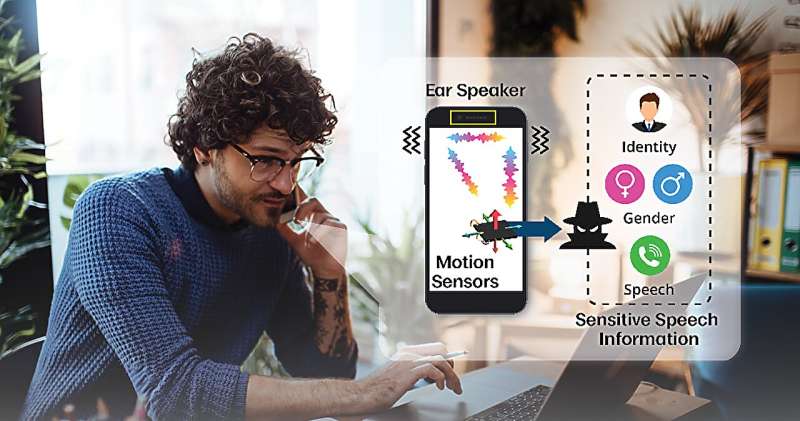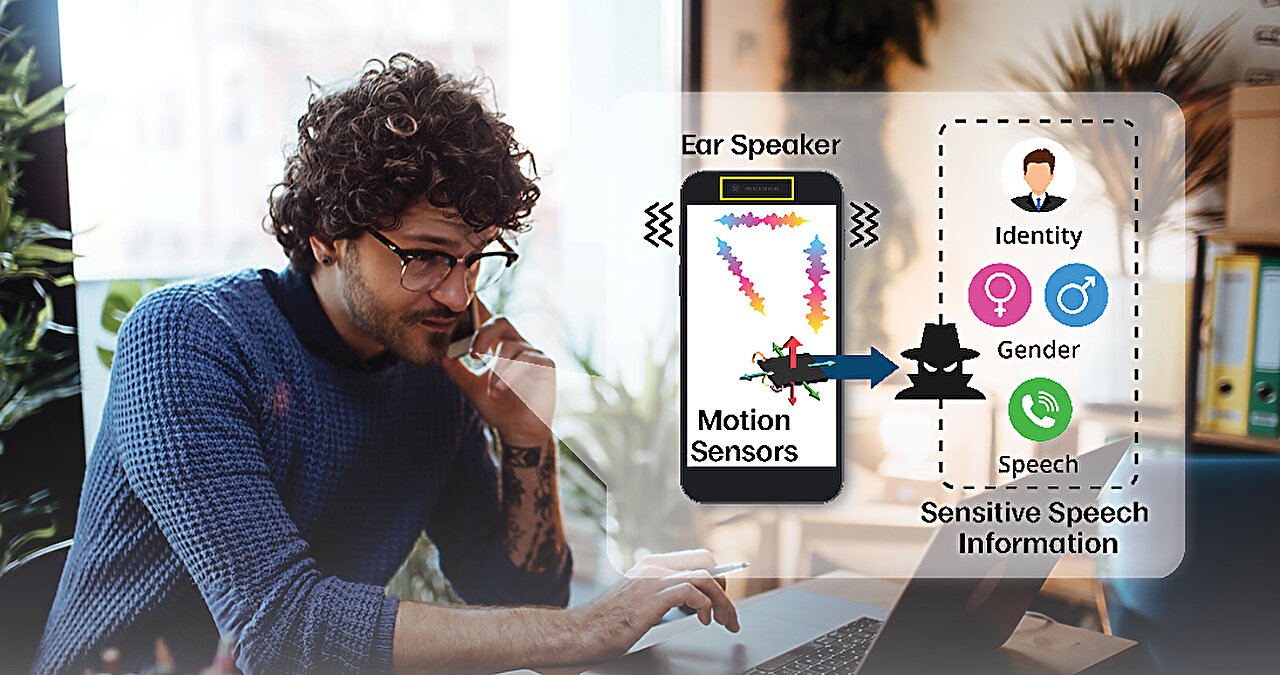Research hack reveals call security risk in smartphones

Advanced smartphone features attract users who want more from their devices, especially in health and entertainment areas, but do these features create a security risk when making or receiving actual calls? A team of academic researchers from Texas A&M University and four other institutions created malicious software, or malware, to answer that question.
The researchers’ malware, called EarSpy, used machine learning algorithms to filter a surprising amount of caller information from ear speaker vibration data recorded by an Android smartphone‘s own motion sensors—and did so without overcoming any safeguards or needing user permissions.
“A standard attack on a cell phone taps the microphone and records the voices,” said Ahmed Tanvir Mahdad, a doctoral student in the Department of Computer Science and Engineering at Texas A&M. “We are recording motion sensor data, which is not directly related to speech, and detecting caller information from that in a side-channel attack.”
Mahdad was the primary author of “EarSpy: Spying Caller Speech and Identity through Tiny Vibrations of Smartphone Ear Speakers,” a paper published in December 2022, on the pre-print server arXiv, that explained the project’s results.
Ear speakers at the top of smartphones are traditionally small and produce low sound pressures during conversations. These vibrations improve clarity when the phone is pressed against the user’s ear.
The speakers are not considered a good source for audible eavesdropping because of their size and how they function. Yet some manufacturers are replacing these small speakers with bigger ones to create the stereo sounds needed for videos and streaming without considering how much vibration data the bigger ear speakers emit. Since smartphones are equipped with motion sensors called accelerometers to record vibration data tracking user…


